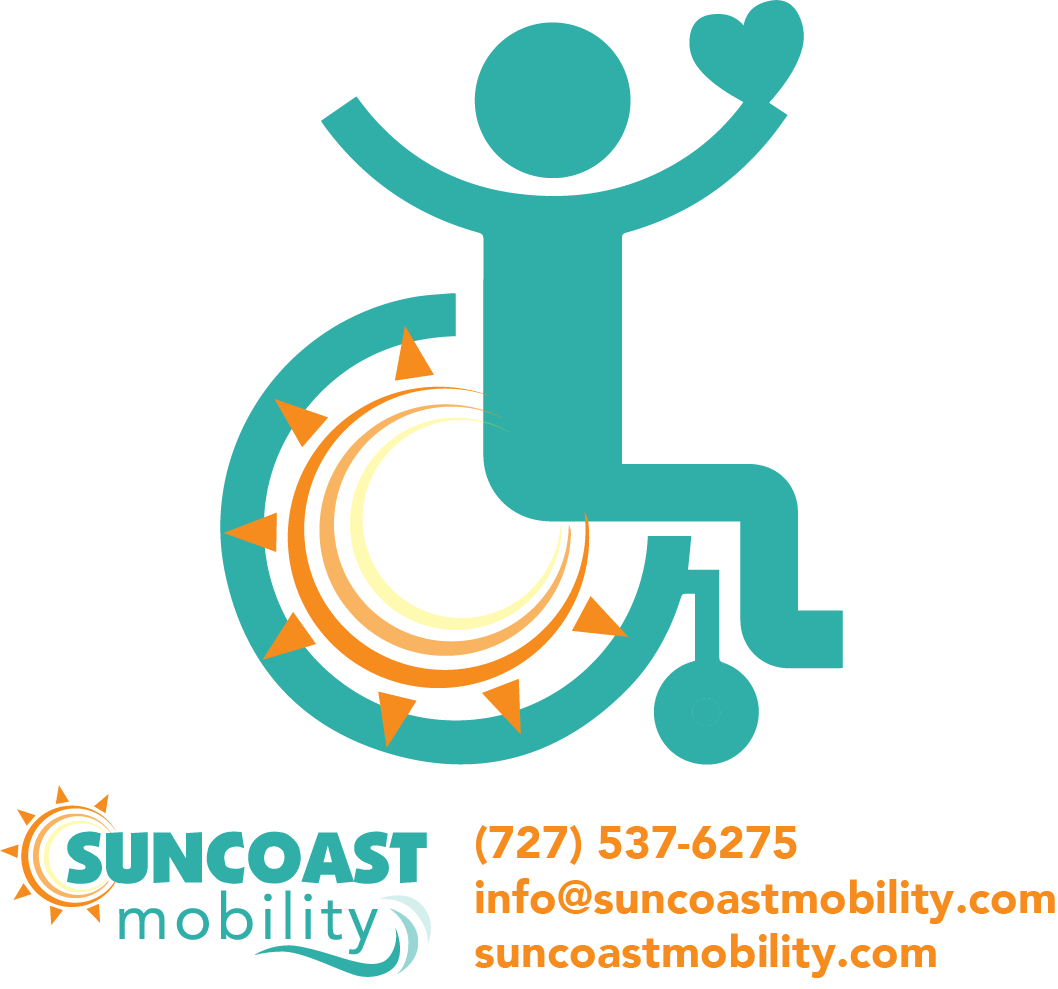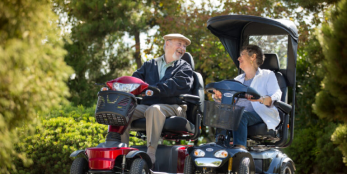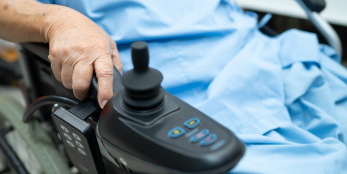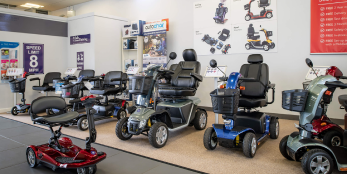Table of contents
Hawaiian Airlines Mobility Scooter Policy: Complete Guide
Traveling with a mobility scooter can feel overwhelming if you’re not sure how airlines handle assistive devices. For passengers flying to or from Hawaii, it’s important to understand the Hawaiian Airlines Mobility Scooter Policy so you can prepare in advance and enjoy a smooth, stress-free travel experience.
This guide covers everything you need to know, including eligibility requirements, battery restrictions, advance notice, airport procedures, and additional accessibility services. Whether you’re traveling for business, vacation, or to visit family, this article will help you navigate the process with confidence.

Overview of the Hawaiian Airlines Mobility Scooter Policy
The Hawaiian Airlines Mobility Scooter Policy ensures that passengers with disabilities have equal access to air travel. Mobility scooters are recognized as assistive devices under the Air Carrier Access Act (ACAA), meaning they can be transported free of charge.
Key highlights of the policy include:
No extra fees – Mobility scooters are carried without additional charges.
Battery approval – All batteries must comply with FAA safety regulations.
Advance notice – Passengers are encouraged to notify the airline 48 hours before traveling with a scooter.
Gate access – Scooters may be used through the airport terminal until boarding.
Trained staff assistance – Hawaiian Airlines personnel are available to help with check-in, boarding, and storage.
Key Requirements for Traveling with a Mobility Scooter
To ensure smooth travel, passengers must follow several important requirements under the Hawaiian Airlines Mobility Scooter Policy:
-
Weight and Dimensions – Scooters must fit within cargo hold size and weight limits. Most standard scooters are accepted, but it’s best to confirm if your device is oversized.
-
Battery Type – Accepted battery types include:
-
Sealed lead-acid batteries
-
Lithium-ion batteries (generally up to 300 Wh per battery, with a maximum of two batteries if removable)
-
Gel cell batteries
-
-
Disassembly – In some cases, the scooter may need to be folded or partially disassembled for safe stowage.
-
Documentation – Providing a manufacturer’s label, battery information, or user manual can speed up approval.
-
Advance Communication – Hawaiian Airlines recommends contacting the Special Assistance Desk at least 48 hours before your flight.
Preparing Your Mobility Scooter for Air Travel
Traveling with a mobility scooter requires careful preparation to ensure a smooth and stress-free journey. Proper planning not only protects your device but also helps airline staff handle it safely. Here are key tips to get ready:
Check dimensions and weight – Before your flight, compare your scooter’s size and weight with Hawaiian Airlines’ cargo requirements. Oversized or overweight scooters may require special handling, advance notice, or additional fees. Measuring your scooter in advance prevents surprises at check-in.
Secure batteries – Battery type and handling are critical for air travel. Removable lithium-ion batteries should be carried in the cabin in protective cases with terminals covered to prevent short-circuiting. Non-removable batteries must be firmly attached to the scooter and properly insulated. Always confirm Hawaiian Airlines’ battery policies, as rules for lithium-ion or wet-cell batteries may vary.
Bring essential tools – Carry a small toolkit to help with disassembly, minor adjustments, or reassembly. Many scooters can be folded or partially disassembled to fit cargo compartments more easily, so having tools on hand can save time and prevent delays.
Label your scooter – Clearly attach your name, contact information, and flight details to your scooter. This simple step reduces the risk of lost or misplaced equipment and helps airline staff identify your device quickly. Consider using a waterproof label or tag for extra protection.
Carry backup mobility aids – Even if your scooter is traveling safely, delays can happen during baggage handling. Bringing a lightweight, foldable cane or walker ensures you have mobility support while waiting for your scooter at your destination. This also provides peace of mind during airport transfers or unexpected delays.
Review airline instructions in advance – Familiarize yourself with Hawaiian Airlines’ Mobility Scooter Policy, including required documentation, disassembly instructions, and notification procedures. Advance preparation helps prevent confusion and ensures that staff can assist you efficiently.
Practice disassembly and packing – If your scooter must be partially disassembled, practice the process at home. Knowing how to safely fold, detach, or secure parts ahead of time reduces stress at the airport and ensures you comply with airline guidelines.
Double-check documentation – Carry any necessary prescriptions, Certificates of Medical Necessity (CMN), or medical records that confirm your need for a scooter. Airline staff may request these documents to verify accessibility requirements.
By following these steps, you can make sure your mobility scooter is well-prepared for air travel, minimizing the risk of damage and delays while ensuring a smooth journey from check-in to arrival.
Why Advance Communication Matters
Notifying Hawaiian Airlines in advance is one of the best ways to prevent issues on travel day. By calling ahead, you can:
Confirm battery approval and compliance with FAA rules.
Request priority boarding to allow extra time for seating.
Arrange wheelchair assistance for moving through security and terminals.
Avoid misunderstandings about size, weight, or disassembly.
Hawaiian Airlines suggests contacting their accessibility team at least 48 hours before your flight. This simple step ensures staff are prepared to meet your needs from check-in through arrival.
Additional Accessibility Services
The Hawaiian Airlines Mobility Scooter Policy is just one part of the airline’s comprehensive approach to accessibility. To support passengers with mobility challenges, Hawaiian Airlines offers a wide range of services designed to make air travel safe, convenient, and comfortable:
Wheelchair assistance – Available from check-in through boarding, this service helps passengers navigate the airport, including moving through security, terminals, and gate areas. Hawaiian Airlines staff can also assist with transferring from the wheelchair to the aircraft seat if needed.
Accessible seating accommodations – Passengers with mobility limitations can request seating options such as extra legroom, aisle access, or proximity to restrooms. Early requests are recommended to ensure availability and comfort throughout the flight.
Service animal travel policies – Hawaiian Airlines strictly follows ACAA guidelines for passengers traveling with trained service animals. The airline provides instructions for documentation, boarding, and in-flight arrangements to ensure both the passenger and the service animal have a safe and comfortable experience.
In-flight support – Flight attendants can assist with stowing mobility devices, providing safety briefings, and explaining any in-flight procedures for passengers with special needs. This includes ensuring that scooters or other assistive devices are properly secured during takeoff, landing, and turbulence.
Airport accessibility resources – Hawaiian Airlines provides comprehensive guidance for travelers navigating the airport. This includes information about accessible restrooms, elevators, ramps, and terminal layouts, helping passengers plan their route from arrival to boarding efficiently.
Special assistance coordination – For complex mobility needs, Hawaiian Airlines can arrange additional support, such as escorting passengers to connecting flights, handling scooter pick-up at baggage claim, or coordinating with airport staff for smooth transfers.
By offering these services alongside the Hawaiian Airlines Mobility Scooter Policy, the airline ensures that travelers with disabilities can enjoy a flight experience that is not only accessible but also respectful, dignified, and stress-free. Proper planning and awareness of these resources allow passengers to focus on the journey itself rather than worrying about logistics.
Tips for Maximizing Approval and Smooth Travel
Flying with a mobility scooter can feel complicated, but being prepared can make the entire process much easier. To ensure your journey with Hawaiian Airlines goes as smoothly as possible, keep these best practices in mind:
Document everything – Bring copies of your prescriptions, doctor’s notes, Certificate of Medical Necessity (CMN), and scooter specifications such as weight, battery type, and dimensions. Having this paperwork ready makes it easier to answer staff questions, prove medical necessity, and resolve issues quickly if they come up.
Provide specifics – Clearly explain why you require a mobility scooter instead of using alternative aids like a cane, walker, or manual wheelchair. Highlight how the scooter supports your independence, safety, and ability to perform daily tasks. The more detailed your explanation, the less room there is for confusion or denial.
Follow authorization rules – Hawaiian Airlines requires passengers to submit battery details, scooter specifications, and disassembly instructions before the flight in many cases. Providing this information early helps the airline verify that your scooter complies with FAA safety regulations and prevents last-minute issues at check-in.
Stay informed – Airline policies and FAA battery regulations may change over time. Before every trip, review the latest information on Hawaiian Airlines’ accessibility page or call their Special Assistance Desk. Staying current ensures that you are always traveling with the correct documentation and that your scooter is properly prepared.
Appeal or escalate if needed – If you encounter a problem—such as a misunderstanding about your scooter’s size or battery approval—don’t hesitate to ask for a supervisor or an accessibility officer. Airlines are legally required to accommodate passengers with disabilities under the Air Carrier Access Act (ACAA), and escalating politely but firmly can help resolve issues quickly.
By staying organized, proactive, and well-informed, you’ll set yourself up for a smoother journey. Taking these steps in advance not only saves time but also gives you greater peace of mind, ensuring your Hawaiian getaway begins stress-free.
Frequently Asked Questions (FAQs)
Can I bring my mobility scooter on Hawaiian Airlines flights?
Yes. The Hawaiian Airlines Mobility Scooter Policy allows passengers to bring scooters as assistive devices at no additional cost.
What kinds of batteries are allowed?
Hawaiian Airlines accepts sealed lead-acid, lithium-ion, and gel cell batteries, provided they meet FAA requirements. Lithium-ion batteries must generally not exceed 300 Wh each.
Do I need to notify Hawaiian Airlines before traveling with a scooter?
Yes. It’s recommended to contact the airline at least 48 hours before departure to confirm details and request assistance.
Will I be charged extra for my scooter?
No. Mobility scooters are classified as assistive devices, meaning they are transported free of charge.
Can I use my scooter inside the airport?
Yes, you may use your scooter through security and to the gate. At boarding, airline staff will assist in stowing it safely in the cargo hold.
Conclusion
Flying with a mobility scooter doesn’t have to be complicated. The Hawaiian Airlines Mobility Scooter Policy provides clear guidelines to ensure passengers with disabilities have a safe and accessible travel experience.
By preparing your scooter in advance, confirming battery compliance, and notifying the airline ahead of time, you can avoid unnecessary delays and enjoy your journey with peace of mind. Hawaiian Airlines’ commitment to accessibility means you’ll have the support you need—from check-in to landing—to make your trip as smooth as possible.
Whether you’re heading to the Hawaiian Islands for vacation, family, or business, knowing the Hawaiian Airlines Mobility Scooter Policy ensures you’ll travel with confidence, comfort, and independence.








